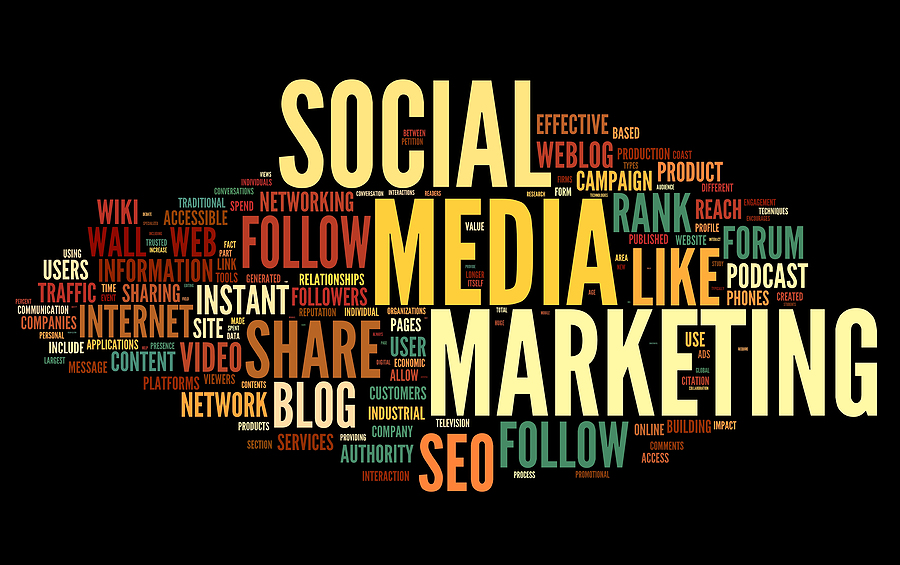
By Danielle Dolin-Bane and Nikki Loy
Various forms of social media are the latest tools for sales, and yet they are also the tools frequently ignored by company leadership. Why? Social media is the edge of the flat world where proven marketing is concerned. While the evidence for its effectiveness is still amassing, it is quickly growing in the direction of success. Social media is the spherical world of revolutionaries. Are you a revolutionary?
If not, maybe you should board the boat. Recent research reveals that social media is serving an important purpose in business, especially sales. That isn’t to say that social media can substitute for a real person, but social media can do much of what sales people have been doing for years.
Social media eliminates repetitive effort, capitalizes on consumer sharing, provides a place for brand-related community building and allows consumers to provide product and service feedback. Traditional sales functions can do this, but not as efficiently.
What, then, is the overlap? The largest overlap is building relationships. Both require trust, engaging interactions and some occasional humor. According to Mike Myatt on www.forbes.com, these are the elements of effective sales. We buy from those we trust—those who add value for us. The reason social media is called social is because it’s about interacting, and at first blush, it all looks social. Expert upon expert will tell you, however, that socializing with customers plays a huge role in closing the sale. From this perspective, using social media is like multiplying your sales force.
If you’re ready to come aboard, consider these general guidelines that will help you stay the course.
- Don’t sell—build the relationship. Be trustworthy. Keep commitments.
- Share valuable information related to your product. Tips on best uses, tricks or even statistics on its use can be of great value.
- Gather information. People love to give their opinions!
- Respond promptly or risk making the customer mad. It’s that simple (See #1).
- Begin with one or two social media sites and ensure proper site upkeep.
- Be prepared for the increase in demand that social media will create.
- Make social media part of a bigger communication and marketing strategy.
While new social media tools emerge daily, there are those like Twitter and Facebook that reign supreme. Unsure of which ones to use or which ones will be more beneficial for business? The following is a breakdown of sites and how they are used so that you can judge for yourself which sites are most appropriate for your business.
Twitter is the quintessential tool for sharing or gathering succinct information on any topic and social networking. Users tweet messages using less than 140 characters on this popular microblogging platform. It is well known for breaking news of any kind before it reaches live television, as seen in the example of the NFL draft announcements in 2012, which were tweeted before announced on live television. Businesses, therefore, can not only use it to microblog about their products but also broadcast specials, new products and other features.
Foursquare
Foursquare is a location-based social networking site and mobile app that allows users to check in and discover points of interest or businesses near them. What are the business benefits? Once merchants stake a claim on Foursquare, they can offer users who check in special treatment (e.g., free products, reward points, discounts). Check-in’s are often shared on other social media platforms such as Twitter and Facebook, and users can leave recommendations and tips anywhere they visit. The snowball effect occurs when friends of users see check-ins and then visit the venue themselves, ideally leading to higher visibility and increased purchases.
Facebook, one of the original online tools for connecting to friends all over the world, is best used for sharing information, images and videos as well as offering specials. Businesses can list their directory information since Facebook is often used in place of the traditional phonebook. This site can also be a hub for a mix of social media activity. For example, users can link their Twitter, Foursquare and Pinterest accounts to Facebook. Similarly, they can post direct links to blogs or other sources of information. If you want to use only one social media site, Facebook should be your choice.
Pinterest is an image-focused networking site where millions of users can see and share boards and pins of images they find interesting. Users can re-pin and comment on images they like and users can link their boards and pins to other networking sites. Pinterest can be used as a virtual storefront and is sometimes preferred to a company Web site. It’s best used when the product lends itself to visual marketing.
YouTube
YouTube is dedicated to sharing personal and company-sponsored videos. Businesses can use it to showcase their products, processes or even new styles in their physical locations. For example, hair salons demonstrate style methods and new products. McDonald’s recently created videos answering questions from their customers. Companies can connect with their clients by posting videos of their office space, creating how-to videos, introducing team members or even showcasing customer-produced commercials.
Blogs
Blogs are online information posts that may be professionally written to appeal to consumers and/or to connect with employees. They may also play host to a list of all of the company’s social media activity. To add further insight and credibility, a blog can be written by a company leader. Blogs can be used internally to keep employees tuned in and used externally to increase visibility of company players and products. They can humanize a business as well. Not interested in blogging? Businesses can sponsor existing high-traffic blogs. Dooce.com, named one of Time magazine’s “essential blogs” for 2011, publishes business-sponsored posts from IKEA and Old Navy.
Other social media sites such as LinkedIn, Flikr, Tumblr, Delicious, Google+ and Ning are also excellent choices for the ever-changing workplace. Each site offers invaluable resources to launch a business into a new realm of success. Do some research and recognize social media sites that will reach your target audience and accomplish your goals.
Regardless of which platform you choose, make sure you are engaging with your customers. The highest potential for wasting a good social media resource is posting old news.
Your business may not be the first explorer to proclaim “Land ho!” when it comes to social media, but the opportunity this new land offers is rich. Appoint a captain, rig the boat and set sail for the seas of social media.
About the Authors
 Danielle Dolin-Bane, a native of West Virginia, is a faculty member in the Department of Communication Studies at West Virginia University. Dolin-Bane is the director of the Corporate and Professional Communication Masters Program, which is delivered in four locations throughout the state. With years of experience in both academics and corporate training, Dolin-Bane brings a variety of content and professional experiences to the classroom. Though she enjoys teaching and training, she also appreciates a summer afternoon on the boat with her family.
Danielle Dolin-Bane, a native of West Virginia, is a faculty member in the Department of Communication Studies at West Virginia University. Dolin-Bane is the director of the Corporate and Professional Communication Masters Program, which is delivered in four locations throughout the state. With years of experience in both academics and corporate training, Dolin-Bane brings a variety of content and professional experiences to the classroom. Though she enjoys teaching and training, she also appreciates a summer afternoon on the boat with her family.
 Nikki Loy is a faculty member in the Department of Communication Studies at West Virginia University (WVU). She teaches “Social Media in the Workplace,” “Small Group Communication” and “Presentational Speaking.” Loy is a member of committees on undergraduate curriculum design and technology use. As an advisor, she works with students throughout their college careers to help them achieve their goals as WVU students and as communication studies majors. She holds both a BS and an MS in journalism from West Virginia University. A true West Virginian and loyal fan, Loy can often be found cheering on the Mountaineers.
Nikki Loy is a faculty member in the Department of Communication Studies at West Virginia University (WVU). She teaches “Social Media in the Workplace,” “Small Group Communication” and “Presentational Speaking.” Loy is a member of committees on undergraduate curriculum design and technology use. As an advisor, she works with students throughout their college careers to help them achieve their goals as WVU students and as communication studies majors. She holds both a BS and an MS in journalism from West Virginia University. A true West Virginian and loyal fan, Loy can often be found cheering on the Mountaineers.










One Response
That’s my daughter!